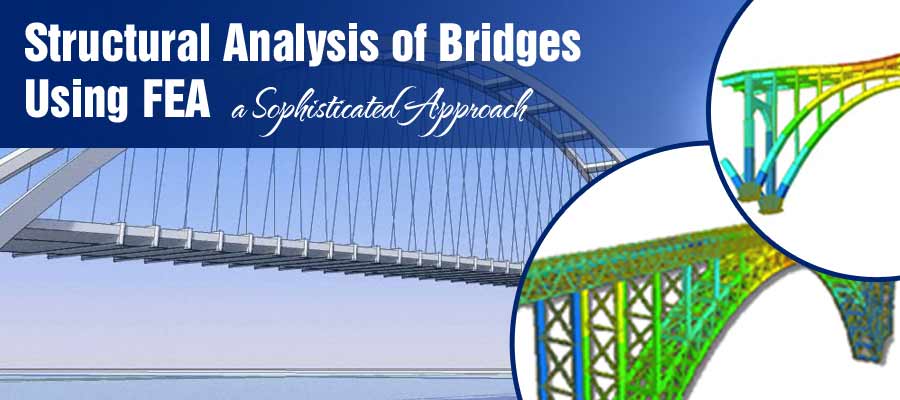Structural Analysis of Bridges Using FEA, a Sophisticated Approach
Posted by Rohan Belhe on December 16th, 2016

A trend of constructing sky scrapers and grandiose bridges has become a measure to determine how technologically advanced the construction firm is. These firms constantly engage in erecting immense structures and bridges across large water mass, as a consequence to increase in population density and frequent long distance commutation.
Since structures are constantly subjected to varying loads, the possibility of earthquakes, high winds, water currents and other loading, they must be designed with massive strength and load carrying capacity. This is possible today, through amalgamation of advanced technology and engineering principles, and is already revolutionizing the way construction projects are planned and executed.
Among the modern construction works, bridges have captured the attention of researchers and design engineers. Bridges built in past few years are generally composite structures with decks constructed of reinforced concrete in conjugation with longitudinal steel girders, to provide the necessary strength and ductility. When a bridge is constructed, millions of dollar and hundreds of lives are at stake.
Owing to such reasons, bridges are usually constructed with substantial safety margins and compensation for surplus loading conditions. For enhanced viability and sustainability over several hundred years, the design needs to be robust and analyzed from every aspect of physics.
The ease and finesse in designing of bridge structure by generating 3D model and testing it in a model based environment for physical conditions, empower structural engineers with quick and accurate decisions. Designing of such large structures involves 3D model generation and analysis using software simulation for conceptual design and design development.
Modeling Phase
Computer software’s capability to generate accurate models for structure from conceptual designs aids structural and design engineers in combining engineering principles with architectural aspects of the structure. Incorporating the most suitable geometric forms complying with aesthetics and spatial availability becomes a bit easier with CAD software and also makes it possible to explain the design intent to project stakeholders better.
With Tekla and/ or STAADPro, structural engineers are empowered to fetch information pertaining to quantity takeoff and Bill of Material – BOM for cost estimation of modern bridges, composite structures of steel and steel – concrete. Detailing of decks, connections, welds, bolts and reinforcement bars can be extracted, which is usually challenging with 2D plans of the structure.
Modeled information often coupled with graphical information helps the project stakeholders to get a clear idea of as-built structure. With such on hand information catalogue, designs can be altered and waste of man power and resources can be avoided, if encountered during construction phase.
Analysis using FEA
The aims of structural analysis for bridges lie at the optimization of design from engineering and sustainability perspectives and visual appearance. Through consideration of location and number of support midway between the bridge span, thickness of the span, quantity of concrete and steel and other necessary elements for extreme loading condition, structural engineers build structures of immense strength.
Validating of designs includes numerous calculations when done manually, but with FEA behaviors of each layer of the structure is studied when subjected to various physical phenomena in virtual environment. Say for instance upper layer of the span is under compression and lower layers undergo tensile stresses when bridge is in sagging condition would include computing moments, stress and various types of loads.
Though the same phenomena occurs in a beam of building, the analysis method will differ, since the bridge components are subjected to outdoor extreme conditions of temperature variation, reverse cycles of live loading and more chances of corrosion. Thus, bridge structure requires an approach that addresses adequate services and additional fatigue limits.
When this entire process is compared with traditional approach, one realizes how sophisticated and detailed model based FEA approach is. Most of the challenges and considerations during construction work are eliminated in initial stages leaving engineers a better scope for design optimization.


